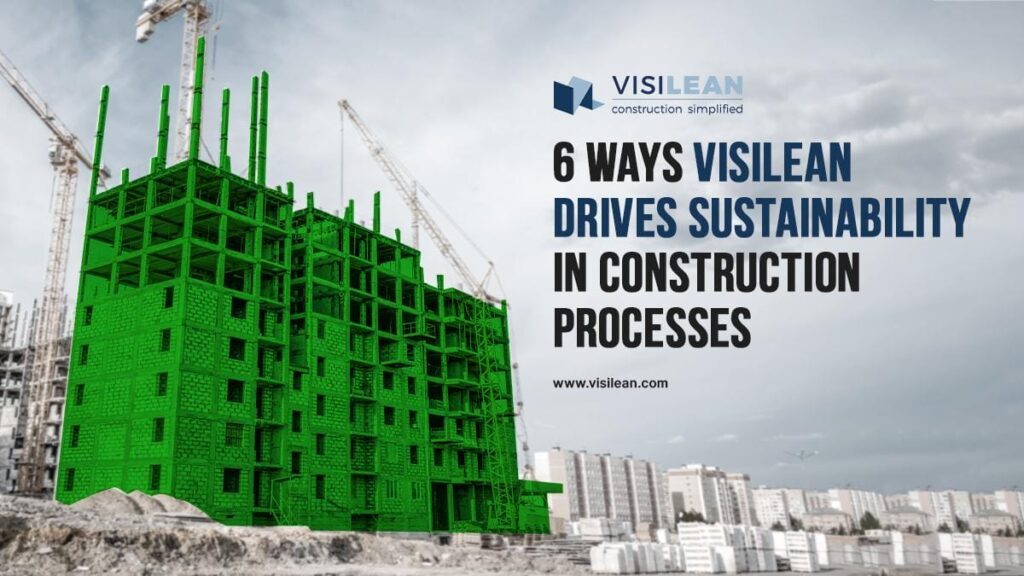An industry such as construction can never go unnoticed by anyone’s eye. The construction industry’s growth rate is so steady at 3.9% that if you stack all the newly built skyscrapers each year, you might just reach the moon in a few decades! While the growth rate might be steady, it comes at a huge cost of increasing emissions. While accounting for carbon footprint and global warming, this relationship between the industry’s growth and emissions points to a questionable figure on sustainability today.
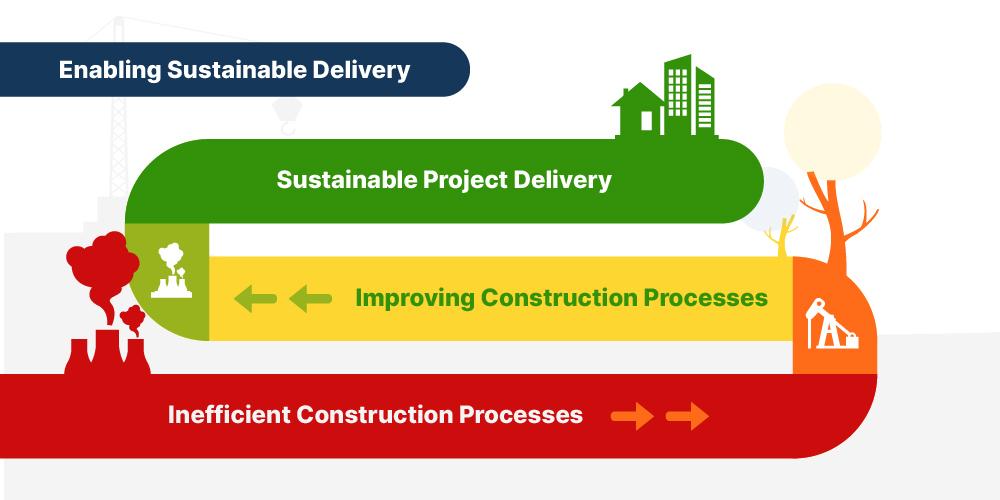
Sustainability is predominantly translated into reducing carbon emissions from physical waste, energy waste, or the use of fossil fuels. The truth is that we categorically neglect the 39% of process waste that leads to physical and energy-related wastes and is probably one of the largest contributors to CO2 emissions when it comes to construction. We carried out detailed research on the CO2 emissions during the construction execution phase, and the results are as shocking as they are!
Results suggest that the construction phase may be emitting far more carbon than it was originally designed for, simply due to poor execution practices. The most alarming fact is that the extent of such emissions is unknown, nor is there a potential for improvement in the absence of data collection. This falsifies the existing notion that “Construction phase roughly emits 2% of CO2 during the entire lifecycle of a project”.
In fact, existing CO2 calculations take into account zero deviations from the predefined construction processes. All the LCA (Life Cycle Assessment) tools suffer from the limitation of relying on “optimum conditions”. However, the conditions on the ground are seldom optimum, and deviations are most common. As a result, the construction phase in reality may be contributing as high as 50% of total waste and emitting far more carbon than the industry presently assumes.
If we do a cross-section today of all the developments across the globe, the number of construction projects in the construction phase overshooting their timeline will highlight the importance of focusing on the aspect of process improvement in this phase to achieve sustainable outcomes. We’ve highlighted below some of the ways this is possible:
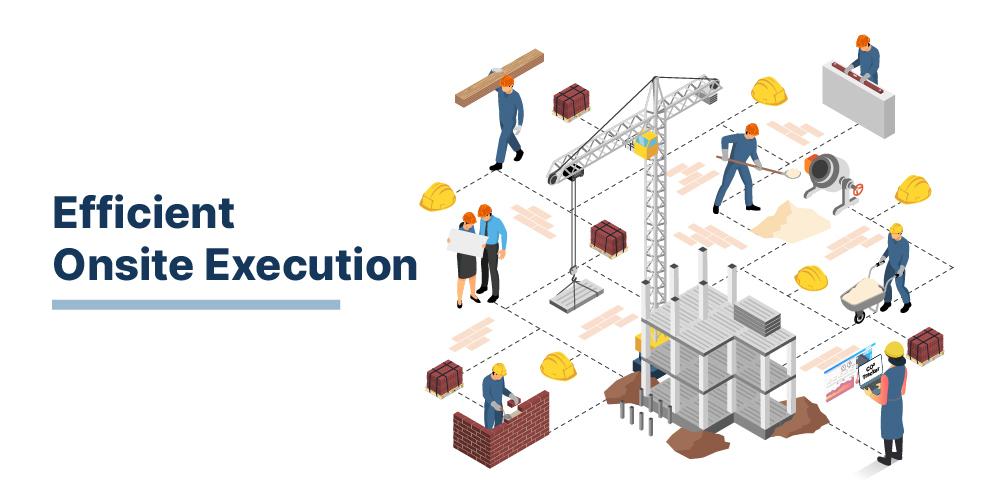
- Firstly, the change begins by having robust processes in place. Our research connecting lean and sustainability points is based on the same context to help minimise deviations and achieve efficiency in project delivery. Lean construction processes in their core help to minimise waste from the production and design processes and, as a result, reduce both physical and energy waste.
- Secondly, we need to include the construction phase in tracking carbon emissions, along with the deviations accounted for. These measurements will be instrumental in knowing where the improvements are needed.
- Thirdly, we need to change our perspective on construction. A balanced approach must be opted for instead of top-down views on sustainability so that it depicts the ground-up versions of reality, right from the design to construction and later the operations phases.
- Lastly, alternative building materials, more sustainable energy sources and how we can reduce energy while the facility is in use during the operations phase should be taken into consideration.
VisiLean was designed with an aim to improve construction project delivery methods, and we’ve been on a mission to do this across projects globally over the last 6 years. VisiLean addresses the core of construction management by improving the efficiency of production on the ground. At the heart of this sits the intent to achieve sustainable project delivery. In our research paper, we have proposed a framework that can help clients utilise VisiLean for effectively monitoring and controlling sustainability goals in the construction phase in the following ways:
6 ways VisiLean drives sustainability in construction processes
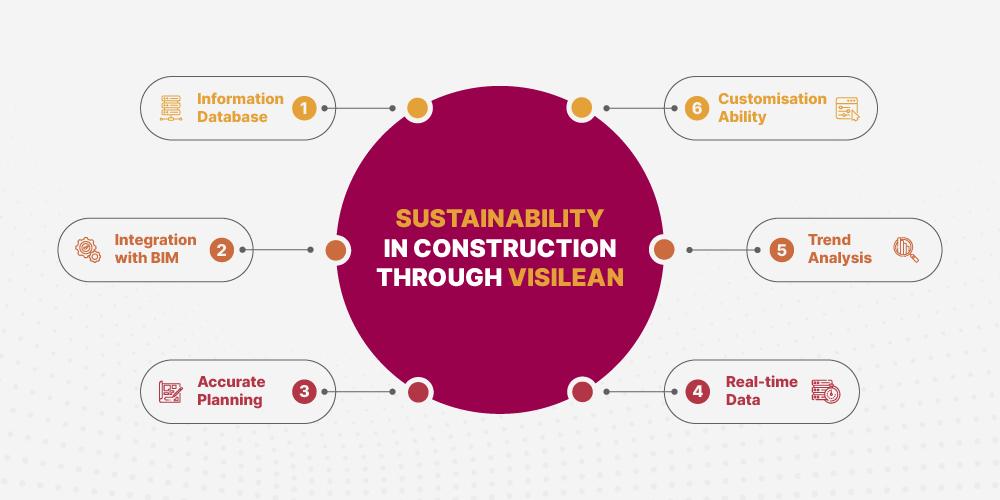
- Information Database – As a cloud-based platform with the potential to integrate with data sources and other tools, VisiLean will have the capability to extract emissions-related information about the various elements from multiple databases across regions and industry sectors. This will help overcome the dependence on a single source of information while allowing clients of specific regions to extract the exact information from the database most relevant to them.
- Integration with BIM – With the power to integrate with BIM models that host detailed information about families of elements, including their material, quantity, and even manufacturing information, VisiLean can harness these inputs effectively for measuring sustainability parameters through accurate data.
- Accurate Planning – VisiLean helps project teams to effectively plan for the work to be executed. With the ability to import master schedules and integrate detailed planning through collaborative methods within a single platform, VisiLean ensures that all stakeholders are coordinating towards realistic goals and durations to be achieved on the ground. With a dedicated make-ready process, teams can ensure the minimisation of wastes such as waiting, transportation, inventory, and rework, all the factors that heavily contribute towards CO2 emissions!
- Real-time Data – VisiLean’s LiveSite, the intuitive mobile application, is designed for teams on the ground. It allows users to give real-time updates on the progress of work on-site. This real-time data provides clarity on not just the status of work, but also any blockers that need attention to ensure work is executed within the planned duration. With accurate data coming from the ground, teams can ensure that the sustainability targets are being tracked and controlled effectively, without any delays or discrepancies in the data.
- Trend Analysis – The key to harnessing data effectively is the ability to map trends across data sets. With VisiLean capturing performance data across trades, locations, and projects, as well as linking it to common element families and parameters across BIM models, the outputs provided by VisiLean can help users map process inefficiencies across the spectrum of their project delivery. In this way, one can understand the most effective areas for process improvement. This plays a critical role in focusing on the sustainability goals to be achieved.
- Customisation Ability: In order to get down to the root cause of such inefficiencies, an assessment of reasons for delays or reworks is required. With the ability to integrate with PowerBI for customised dashboarding, VisiLean charts down the amount of electricity consumed, usage of water, and the waste produced after the completion of each project. This will estimate the carbon footprint of the construction activities listed in the schedule.
Conclusion-
Sustainability in construction projects should originate in the design in order to reflect throughout the lifecycle of the project. However, in reality, the inefficiencies in project execution processes due to overtime, rework, and wasteful workflows contribute to significant carbon emissions across each project and the industry at large. A well-defined plan using VisiLean’s cutting-edge technology that is built on lean construction principles and tools will help overcome these inefficiencies and lead to a swift and sustainable execution of a project.
A poor picture of our processes demands improving them for streamlined, sustainable outcomes in the industry. In addition to that, we should have an effective tracking of our CO2 emissions in place, which would help us understand its impact to incorporate reliable measures for its control. VisiLean, based on lean construction practices, offers a natural solution to this problem to reduce both physical and process waste.
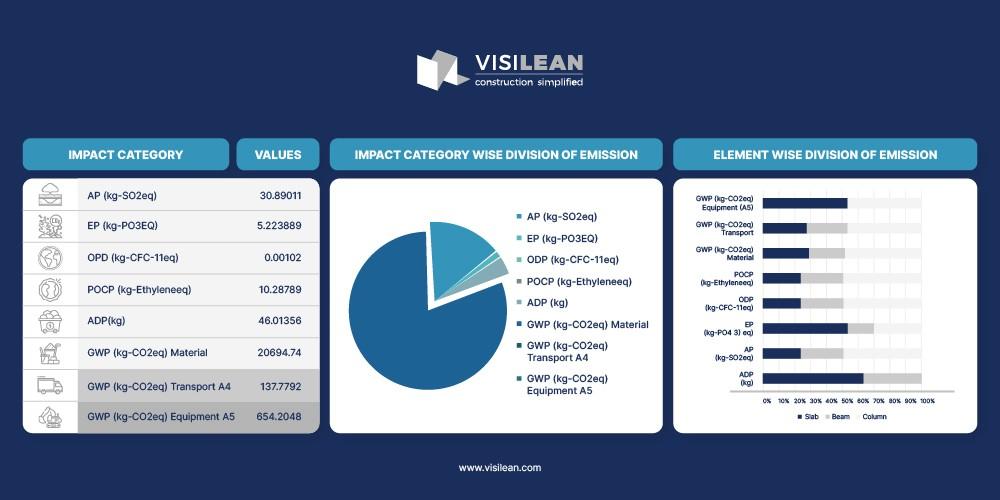
In the proposed dashboard, the impact of inefficient processes is calculated by encompassing elements of a building, different phases, and the materials used in a building. This crucial data allows the user to relook at the inefficient parts of the process and then replan with sustainability as the aim during the construction phase of the project.
